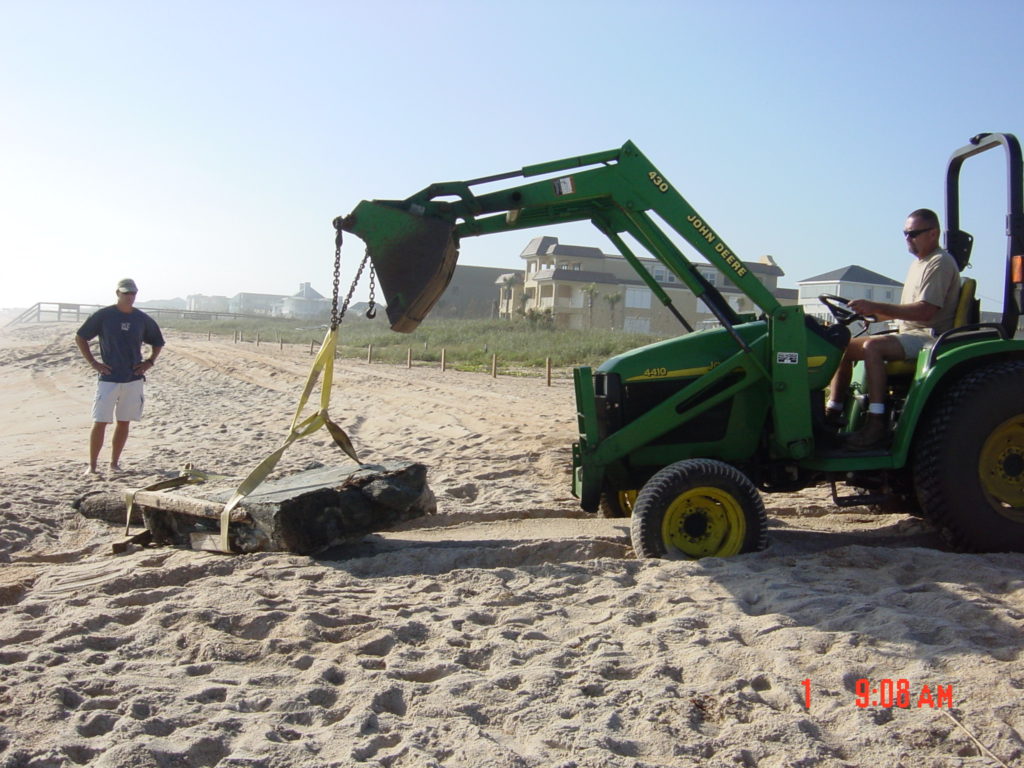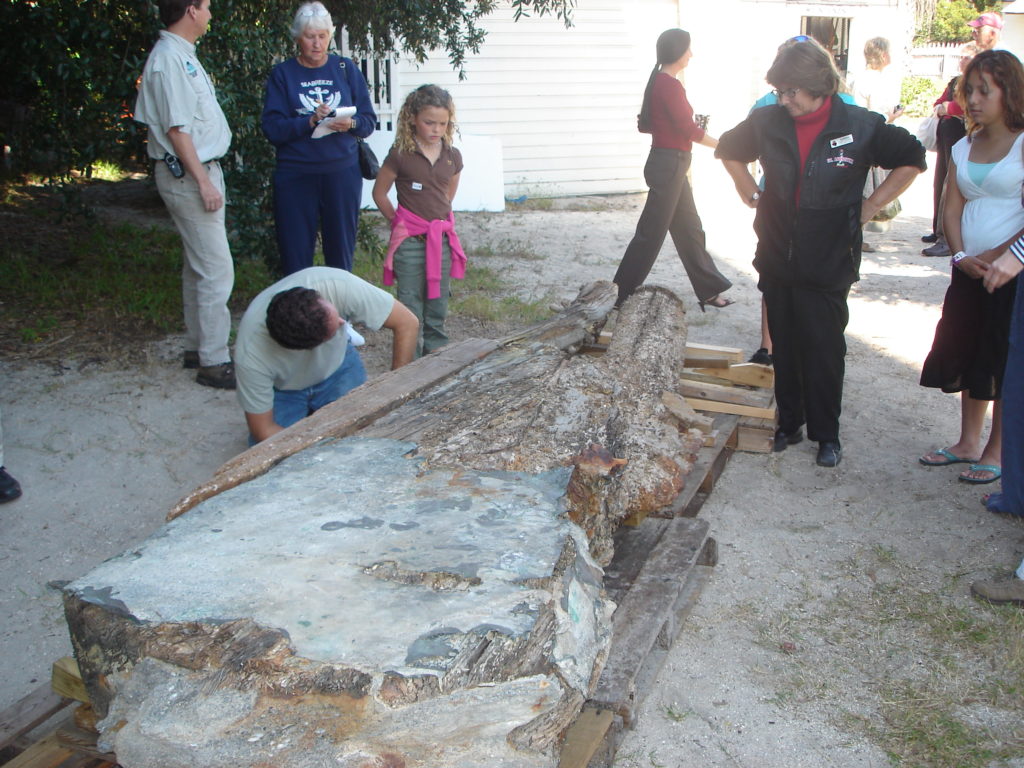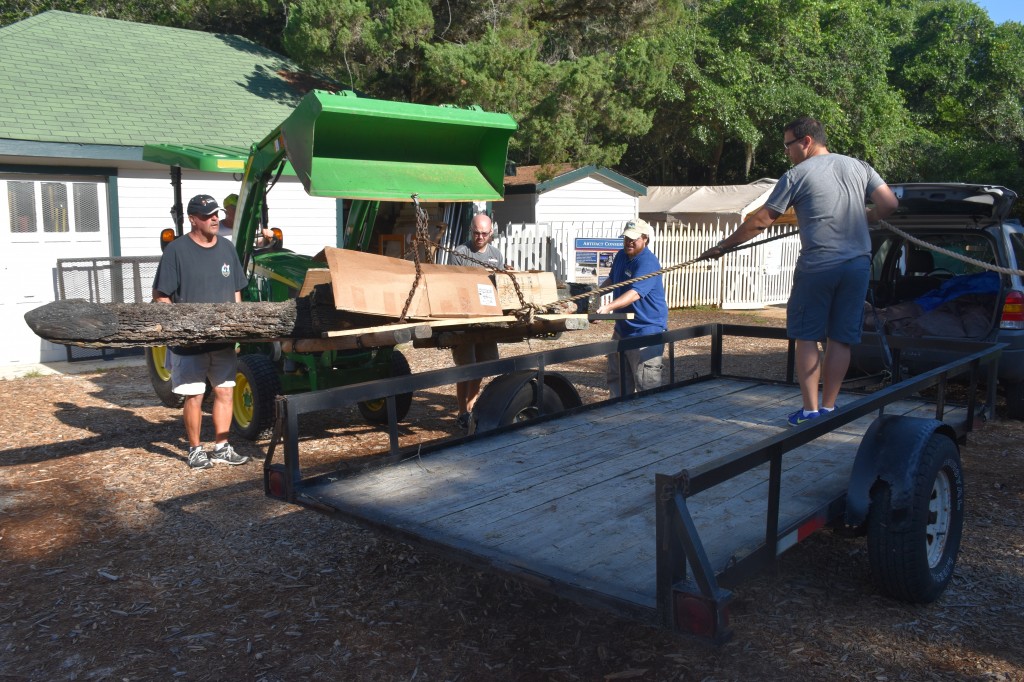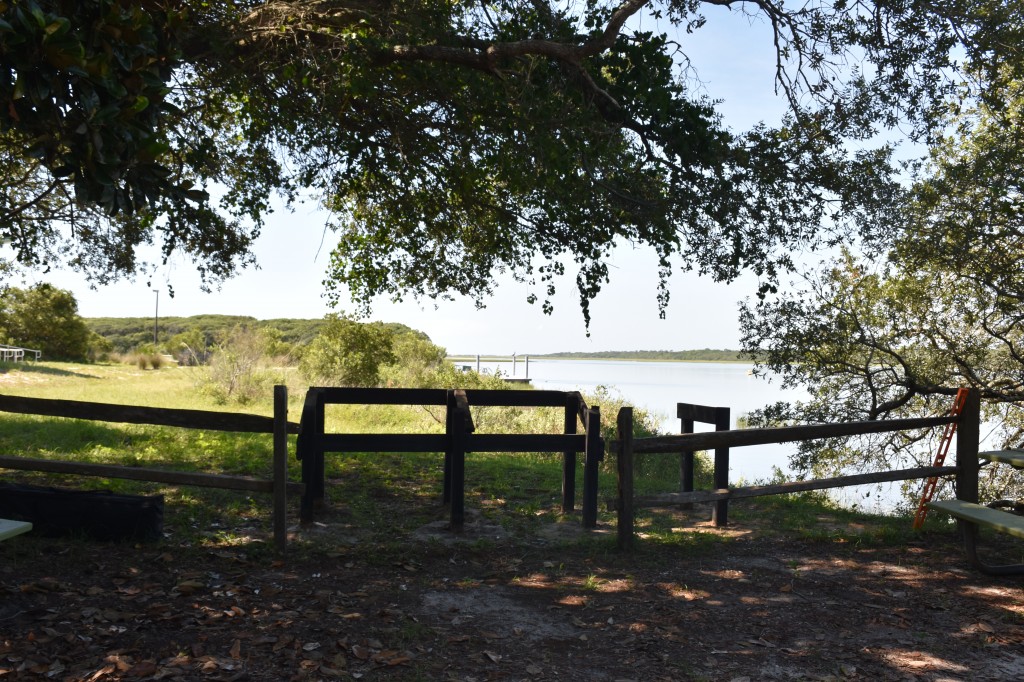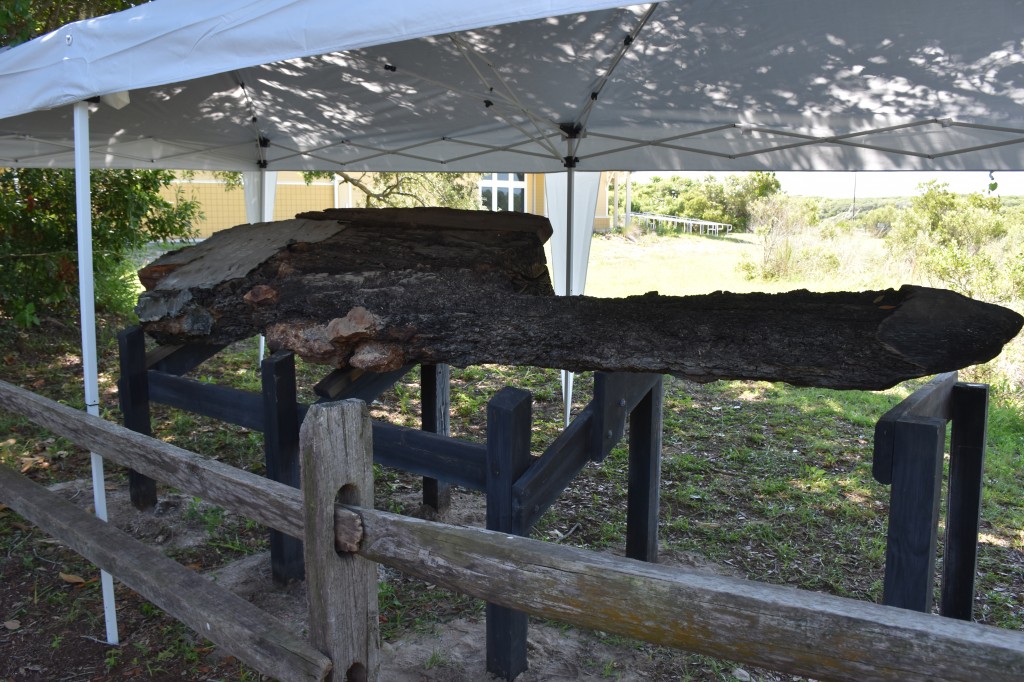Ordinarily, in the conservation blog posts, new artifacts are discussed. Ones being worked on or items that have been finished and are ready to join the St. Augustine Lighthouse & Maritime Museum collection. However, this month’s post is about an artifact that is leaving our grounds and heading back from whence it came.
In October 2005, a large northeaster hit the First Coast area. Because of the wind and storm surges, large shipwreck timbers were exposed on or near the ocean shoreline. One such timber was found and reported by former Lighthouse Archaeological Maritime Program (LAMP) Director Billy Ray Morris.
It was a large, broken rudder made of five separate pieces of wood and sheathed in copper sheeting. The rudder was recorded in situ and left on the beach for a short time. In November 2005, the heavy, unwieldy artifact was lifted from the beach and moved to the Guana Tolomato Matanzas National Estuarine Research Reserve (GTM-NERR).
The rudder stayed at the GTM-NERR for approximately one year and then moved to the St. Augustine Lighthouse & Maritime Museum in 2006 for conservation and monitoring. Field school students detailed, recorded and drew the rudder during the 2007 summer season. Finally, in February 2009, the rudder was placed on a new viewing platform between the Keepers’ House courtyard and the U.S. Coast Guard (USCG) barracks for public display.
With the upcoming new construction on site and renovation being planned for the USCG structures, the rudder would have to move. Instead of trying to shoehorn the artifact into a temporary viewing area, only to be moved again, it was decided that the rudder would be transferred back to the GTM-NERR.
On July 22, 2016, Lighthouse staff prepped the rudder for removal and took down the overhead tent. St. Johns County was gracious enough to help with the move and brought a front-end loader to assist with actually loading and unloading the rudder.
It is sad to see maritime history and a popular display leaving the Lighthouse grounds. However, the new home at GTM-NERR will ensure the public can still see and learn about shipwrecks, archaeology, conservation and history in the greater St. Augustine area.
Andrew Thomson is the Assistant Conservator for the St. Augustine Lighthouse & Maritime Museum. He received his graduate degree and training from the Conservation Research Laboratory at Texas A&M.


